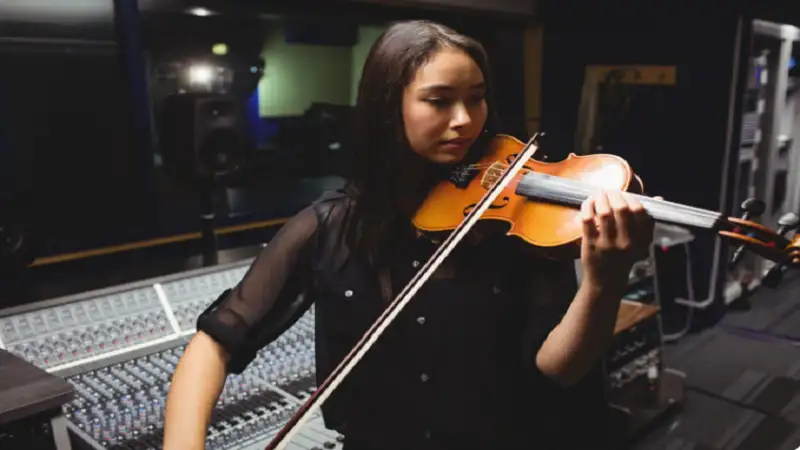WHAT IS VIOLIN AI & HOW DOES IT WORK? – COMPLETE GUIDE
Many different areas are being impacted by the use of artificial intelligence, such as the music industry and healthcare. One particularly interesting advance is Violin AI.
In this technological era, AI machines are a new invention that is able to understand, perform, and even compose music, which is a blend of creativity and technology. But what is Violin AI, and what are the steps of its processes? In this article, we will try to understand the whole scenario about this. For simplicity, let’s explain it step by step.
What is Violin AI?
It is a sophisticated AI that has the ability to identify, synthesize, and perform occasional violin music. It employs both neural networks and machine learning algorithms to analyze thousands of recordings, sheet music, and even performances. In doing so, the AI tries to understand the different ways to elicit a violin’s voice.
How Does the AI Violin Music Generator Work?
The working of a Violin can be understood in a few simple steps:
1. Data Collection
AI systems are trained using huge amounts of data. For an AI-developed violin, this data can include:
- Studio recordings of professional violinists
- Live concert performances
- Sheet music and MIDI files
- Study samples and different kinds of study material
The more effective the dataset is, AI will understand, and the working of violin AI will be more useful.
2. Sound Analysis
Like any other AI, it starts by decomposing the violin’s sound into different pitches, tone, rhythm, vibrato, and dynamics. Emotionally, the notes and sound are disconnected, so the system, which uses the different sounds to recognize the emotional side of it, needs to understand the major and minor of the vocal tone too.
3. Machine Learning & Neural Networks
It derives connections between the notes and the emotional expressions associated with them through deep learning. For instance, the AI could understand the emotional cues of how a violinist plays gently in a romantic setting, or in a sharp manner during a confrontational one.
4. Music Generation & Performance
Once trained, Violin AI can:
- Generate new violin compositions based on user input or prompts
- Play existing pieces realistically through AI-generated sound
- Assist musicians by suggesting notes, harmonies, or improvisations
Applications of Violin AI:
Violin AI isn’t just a cool experiment—it has practical uses in music and beyond:
Music Education:
Producers who do not have real violinists readily available can make use of AI to augment realistic violin melodies into their pieces.
Music Production:
Without getting its premium version or getting proper access, different kinds of producers can use it and also add different violin sounds.
Composition Support:
As everyone can get feedback so their also can composers also get creative suggestions and harmonies at the time of using Violin.
Accessibility:
It is also very helpful for those who don’t know how to play a violin. By using this AI Violin platform, they can get help and gain experience in his/her field.
Advantages of Violin AI
Cost-effective:
No need for expensive instruments or hiring professional violinists for every project.
Time-saving:
You don’t need a proper time to invest in generating violin parts. These Violin AI tools have such a simple interface that users can easily gain experience.
Accessibility:
AI Violin is accessible to everyone regardless of their skills.
Final Thoughts
Violin AI is a virtual platform that utilizes artificial intelligence to create a diverse range of music. This has a simple and user-friendly interface, allowing you to generate music easily and receive feedback to improve your work. On the other hand, there is a human experience. So keep in mind that it doesn’t replace the human soul of violinists.




